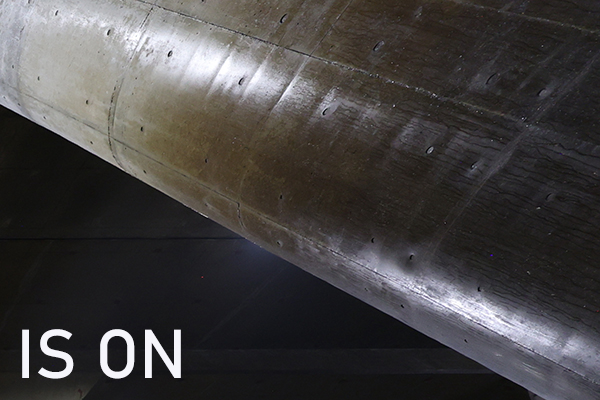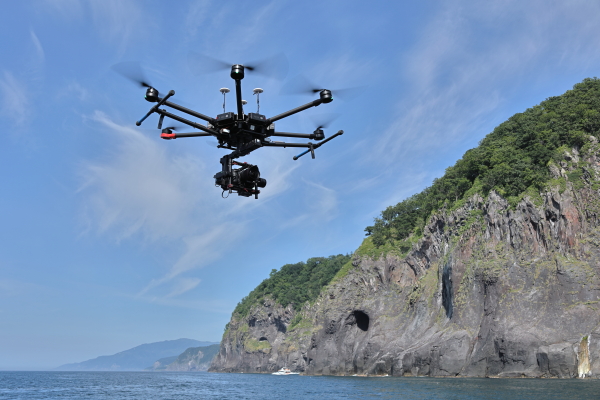RF10-20mm f/4L IS STM: The World’s Widest Non-Fisheye Zoom Lens
On 11 October 2023, Canon made its latest mark on the history of ultra-wide-angle lenses with the announcement of the RF10-20mm f/4L IS STM. The new lens is the world’s first rectilinear (non-fisheye) ultra-wide-angle zoom lens for full-frame cameras to achieve a wide-angle end of 10mm. Equipped with a built-in Optical Image Stabilizer (Optical IS), it features a compact body that is equivalent to the other f/4L lenses in Canon’s RF lineup along with the signature L-lens professional grade build and image quality. Read on to find out more about how this lens breaks new ground in creative expression.
Widen your horizons: Stunning new perspectives
The desire to go wider is every wide-angle photographer’s dream—a dream that becomes more fervent when faced with vast, sprawling landscapes that you wish would fit into one frame, or when you know that just an extra millimetre’s perspective would give your shot the impact it needs. Those dreams have come true with Canon’s new RF10-20mm f/4L IS STM, its widest non-fisheye ultra-wide-angle zoom lens ever.
The RF mount’s answer to the legendary EF11-24mm f/4L USM
The RF10-20mm f/4L IS STM is the RF lens lineup’s counterpart to the EF11-24mm f/4L USM. Created during the EOS DSLR era, the latter earned a solid reputation for its stellar image quality and unique 11mm wide-angle perspective that stood out among the norm of 16mm to 18mm wide-angle zoom lenses. Pending an RF lens successor, it remained a mainstay for many photographers well into the mirrorless EOS R era.
That successor has arrived with the RF10-20mm f/4L IS STM. Reaching 1mm wider with a 10mm wide end, the new lens promises L-lens performance that equals if not exceeds that of the EF lens. It also newly features image stabilisation (IS), all in a smaller, lighter body that nullifies the EF11-24mm f/4L USM's hefty size, one of the latter's only shortcomings. All these come together to deliver unprecedented ultra-wide-angle possibilities for photographers and video creators.
EOS R5/ RF10-20mm f/4L IS STM/ FL: 10mm/ Manual exposure (f/5,6, 1/60 sec)/ ISO 800/ WB: Auto
Supplementing existing RF ultra-wide-angle zoom lenses
The RF lens lineup currently includes three ultra-wide-angle zoom lenses:
- RF14-35mm f/4L IS USM
- RF15-35mm f/2.8L IS USM
- RF15-30mm f/4.5-6.3 IS STM
With its wider coverage of 10-20mm, the RF10-20mm f/4L IS STM offers a 130.4° diagonal angle of view that expands that of the existing RF wide-angle lenses. In particular, the 10mm wide end enables dynamic perspectives that were never possible before—an asset to a variety of scenes that include landscapes, interiors, astrophotography, portraiture, and even wide-angle macro photography.

As the image on the left shows, when shooting from the same position, the RF10-20mm f/4L IS STM’s 10mm wide end covers an area around twice that of a 14mm focal length. It covers around 1.4 times the area covered at focal length 12mm. The wider coverage also enables more impactful perspective.
Lightweight and mobile at just 570g
Weighs just 570g: An engineering feat that achieves newfound mobility
A 1mm reduction in a wide-angle lens’ focal length drastically changes its field of coverage. At the same time, it brings a greater challenge to optical design than the number suggests. The challenge is multiplied when the lens has certain image quality standards to meet: the optical elements required to correct lens aberrations and ensure clear, distortion-free images all the way from the centre to the corners also add to the lens’ size and weight.
Weighing approximately 570g, RF10-20mm f/4L IS STM is an engineering feat because it not only achieves a 1mm focal length reduction over the EF11-24mm f/4L USM, but also does so while achieving a 50% weight reduction over the latter, which weighed 1108g. The newfound portability increases usage opportunities and creative possibilities.


When the RF10-20mm f/4L IS STM is attached to the EOS R5, the resulting 1308g combination weighs barely more than what the EF lens weighs alone, and around 750g less than the latter with the EOS 5D Mark IV. It is similar in size to Canon’s RF mount f/4L zoom trinity lenses.
What enabled the huge reduction in weight?
The design flexibility afforded by the RF mount’s large diameter and short back focus was a major factor that enabled the weight reduction. Canon’s engineers optimised the parts that made up the lens, from optics to mechanical structures. A lead screw-type stepping motor (STM) with a short stroke was used to drive the small and light focusing lens during autofocusing, making it possible to achieve swift AF within a smaller, lighter lens body.
Excellent edge-to-edge image quality
Clear image quality all the way to the edges
The RF10-20mm f/4L IS STM’s 10mm wide end makes it Canon’s widest non-fisheye lens. Unlike fisheye lenses, which leave in curving distortions to achieve a 180-degree view of a scene, the RF10-20mm f/4L IS STM is a rectilinear lens, which corrects the distortions to capture the scene in a way that looks more familiar to us. The high level of correction required involves many special lens elements.
EOS R5/ RF10-20mm f/4L IS STM/ FL: 10mm/ Bulb (f/5,6, 59.9 sec)/ ISO 100/ WB: White fluorescent light

Powerful distortion correction
An enlarged view of the previous image’s top left corner. Even at 10mm, the corners of the image are clean and clear, with minimal distortion as seen in the wire fencing. This is a testament to the excellent correction on the lens.
The lens configuration includes the following special lenses that correct various aberrations:
- 3 aspherical lenses, including the large-diameter, high-curvature glass moulded front lens element
- 1 Super UD lens
- 3 UD lenses (including 1 UD aspherical lens)
Designed to maximise image quality, this configuration was enabled by the RF mount’s short back focus distance. It works with the camera’s digital distortion correction function to achieve image quality that rivals that on the EF11-24mm f/4L USM, all within a smaller and lighter body.
SWC (Subwavelength Structure Coating) and ASC (Air Sphere Coating) on two surfaces each effectively keep ghosting and flaring under control.

Lens configuration diagram
A: Aspherical lens elements
B: Super UD/UD lens elements
C: Aspherical UD lens
D: SWC
E: ASC

The importance of the frontmost lens element
At 10mm, the lens takes in light from an extremely wide area, which needs to be directed to the lens elements behind at the optimum degree of refraction. The frontmost lens plays an important role. On the RF10-20mm f/4L IS STM, it is large, highly curved, glass-molded, and aspherical. The product of many iterations of design simulations, which also took suitability for mass manufacturing into account, it is the ideal shape for achieving high accuracy and performance.
Up to 6 stops’ image stabilisation with peripheral blurring correction
Image stabilisation that corrects peripheral blurring
Popular belief has it that image stabilisation is not necessary at shorter focal lengths, and that even if it were necessary, image stabilisation on the camera end (In-Body IS) would be more effective than in-lens stabilisation (Optical IS). However, a wider lens is more prone to distortion at the image edges due to perspective. This appears as blurring at the edges (peripheral blurring), which cannot be effectively corrected by In-Body IS alone.
Besides incorporating Optical IS, the RF10-20mm f/4L IS STM features a newly developed algorithm that coordinates with In-Body IS at the camera end to correct such peripheral blurring*. This achieves ultra-wide-angle images with unprecedented image quality.
* Currently available only on the EOS R5 (with firmware Ver.1.9.0 or later) at launch.
|
|
|
|
|
|
*According to CIPA standards (yaw and pitch directions). At focal length 20mm
On its own, the Optical IS achieves up to 5 shutter speed stops’ equivalent image stabilisation effect. With Coordinated Control IS on a camera body that features In-Body IS, the combined stabilisation effect is as much as 6 stops’ equivalent.
The conventional rule of thumb states that a shutter speed of at least 1/(focal length) is necessary to achieve images without camera shake when shooting handheld, which means with the RF10-20mm f/4L IS STM, sharp handheld images are possible even with a slow shutter speed that exceeds 1 second. That means more creative freedom, whether you are shooting at night, incorporating creative motion blur effects, or both.
EOS R5/ RF10-20mm f/4L IS STM/ FL: 10mm/ Manual exposure (f/5.6, 0.5 sec)/ ISO 800/ WB: Auto


These images were shot handheld in low light conditions. As the closeups of the top right corner show, IS keeps the image clear and sharp even at the edges. While there is no visible motion blur from camera shake in the IS Off example, its details still look soft due to peripheral blurring.
Powerful prospects for video shooting
As a lens created in an era where video production is increasingly in demand, the RF10-20mm f/4L IS STM is designed with both still photography and video in mind.
Seamless focus tracking
It is the first L-series lens to have autofocus driven by a lead screw-type STM, which can move the focusing unit seamlessly to achieve footage with natural focus transitions even as the AF tracks focus.
Constant f/4 aperture
As the maximum aperture is f/4 throughout the entire focal range, exposure stays consistent throughout the entire sequence even when you zoom.
Image stabilisation
The built-in Optical IS stabilises handheld footage, and coordinates with the camera’s Movie Digital IS for enhanced results to ensure steady footage even when you are shooting while walking. It also works with In-Body IS to achieve enhanced results.

Whether you are shooting stills or video, use the lens with a full-frame camera to maximise its unique, unprecedented perspective.

Take advantage of the RF10-20mm f/4L IS STM for aerial shots: the lens’ newfound mobility makes it suitable for use on drones.
Other notable features
Dust- and drip-proof design

With the various rings, switches, and other moving parts weather-sealed, the lens is designed to prevent dust and water droplets from entering, increasing its reliability.
Fluorine coating

Smudge-resistant fluorine coating on the frontmost element prevents dust and dirt from sticking onto the lens, and allows them to be easily wiped off with a cleaning cloth.
Rear filter holder

As the RF10-20mm f/4L IS STM integrates the lens hood with the barrel, it cannot take conventional screw-in filters. However, it can take rear lens filters.
Lens function button

In addition to the usual controls found on RF lenses, the RF10-20mm f/4L IS STM has a lens function button that can be used as a shortcut for assigned functions such as AF and exposure control.
RF10-20mm f/4L IS STM: Key specifications

Lens construction: 16 elements in 12 groups
Closest focusing distance: 0.25m
Maximum magnification: 0.12x (at 20mm)
No. of aperture blades: 9 (circular blade)
Filter : Rear insert-type
Size: φ83.7 x 112mm
Weight: approx. 570g
Integrated lens hood
Sample Images
EOS R5/ RF10-20mm f/4L IS STM/ FL: 12mm/ Manual exposure (f/8, 1/640 sec)/ ISO 400/ WB: Auto
EOS R5/ RF10-20mm f/4L IS STM/ FL: 10mm/ Manual exposure (f/4, 1/13 sec)/ ISO 1600/ WB: Auto
EOS R3/ RF10-20mm f/4L IS STM/ FL: 10mm/ Manual exposure (f/4, 20 sec)/ ISO 10000/ WB: 4600K
EOS R5/ RF10-20mm f/4L IS STM/ FL: 10mm/ Manual exposure (f/4, 1/10 sec)/ ISO 3200/ WB: Auto










































